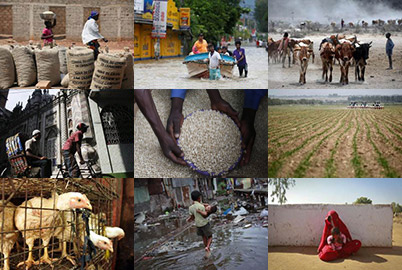* Any views expressed in this opinion piece are those of the author and not of Thomson Reuters Foundation.
Improving the quality and safety of roads are simple solutions that would empower women to sell more and return with the profits in their own – not someone else’s – pockets
For men and women, roads are not the same. Infrastructure, particularly streets and transit systems, makes a significantly bigger difference to a woman’s life and work than to a man’s. This often overlooked fact is critical, given that women now make up 40 percent of the global labor force.
East Asia Pacific in particular needs significant infrastructure investments to unlock the contributions of men and women to the region’s dynamic economies; currently it suffers from an annual gap of $1 trillion in infrastructure financing. However, Asia Pacific is specifically failing to capture the full potential of women’s impact on society because of unsafe, insufficient and inadequate infrastructure.
Safer, less crowded and more cost-effective roads that connect women with the marketplace is one way of making improvements. In East Asia Pacific, output per worker could be as much as 7 –18 percent higher across a range of countries if female workers were employed in the same sectors, types of jobs, and activities as men, with the same access to productive resources. Given this, investing in improving the design and delivery of urban and rural infrastructure to enable women to play a greater role in productivity is a pressing development imperative.
Designing transportation, energy, sanitation and other hard infrastructure with women in mind removes the time, cost and access constraints that hold women back. Impediments to using public transportation are different for women and men.
Studies show that women rank personal security and transportation costs higher than men, who rate speed as the number-one issue. Women make important life choices – “Can I work outside the home? Where? Can I get my children to school?” - based on security and travel costs. Decisions such as these can have important economic implications if a lower-paid job trumps a higher-paid one just because a woman feels getting to the former would be safer.
Gender-smart infrastructure begins with the consultation process: women openly discussing their concerns about a project reveals gender-specific needs and ways of integrating these into project designs.
For the Metro Rail Transit system in Vietnam’s commercial capital, Ho Chi Minh City, an analysis was done to map male and female transportation needs, patterns and constraints, safety and security issues, and willingness to pay.
A gender action plan included gender-sensitive designs such as child seating, storage for prams, appropriate lighting and space for women-owned businesses. Making it easier for women to travel around the metropolis will induce them to make more journeys, thereby helping to boost the city’s economy. As Vietnam’s economy strengthens, this is a powerful way of increasing women’s engagement.
In Asia Pacific’s rural regions, road safety can be a huge issue for women travelling long distances. In one public consultation about a local highway in Papua New Guinea, women were asked about the journeys they made to sell their produce at market. These trips were often uncomfortable and unprofitable. The women reported enduring hours on mountainous roads, at the crack of dawn, crowded beside men in public vehicles, just to take their produce to market.
The discomfort and inconvenience was not even rewarded at the end of the day. All women consulted said they had been robbed of their profits on buses or the roadside.
Improving the quality of roads and street lighting and providing more buses to ease the crowding would encourage women to travel to market more frequently. These are simple solutions that would empower women to sell more and return with the profits in their own – not someone else’s – pockets.
--Karin Finkelston is Vice President, Asia Pacific, for the World Bank's International Finance Corp. (IFC)

